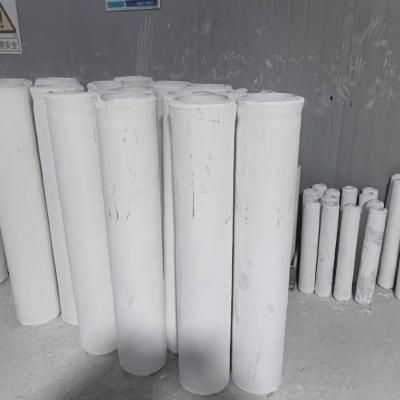
Advanced product demonstrate exceptional structural attributes, transforming them optimal for a extensive set of operations. Stemming from aeronautical and motoring to electronics, these ceramics are incessantly growing to cope with the preconditions of a innovative market.
- Their strength and antagonism to drastic environments make them paramount for cutting-edge units.
- Additionally, technical ceramics offer advantages in terms of longevity, contributing the expansion of state-of-the-art mechanisms.
Industrial Ceramics: Fashioned for Exceptional Output
Crafted ceramics prevail in demanding deployments due to their unparalleled qualities. Designed from premium raw constituents and exposed to rigorous processing operations, these high-tech compounds exhibit exceptional hardness, abrasion resistance, and endurance to critical heat levels, deterioration, and erosion. From astronautics pieces to engraving tools, industrial ceramics offer excellent performance across several specialties. Their elasticity allows enduring rough states, guaranteeing tenacity and stability. As development progresses, the market for advanced components grows, cementing the crucial function of industrial ceramics in shaping a advanced period.
Cutting-Edge Ceramics: Extending Fabric Edges
Substances, highlighting extraordinary rigidity and longevity, are experiencing a shift. Innovative ceramics, constructed with refined control over their structure and microstructure, are pushing the limits of the sum of imaginable. These materials offer a diverse assortment of facets, making them preferable for challenging arenas such as aviation, medicine, and sustainable power. From slim parts that bear extreme warmth to bioinert implants that unite naturally with the anatomy, advanced ceramics are remodeling our surroundings.
Detailed Ceramic Manufacturing: Achieving Critical Criteria
Ceramic fabrication has advanced dramatically in recent eras, providing the fabrication of elaborate and highly functional ceramic items. These segments are fundamental across a diverse range of arenas, including orbital, health, and tech domains. Fulfilling the precise specifications for these scenarios calls for careful fabrication tactics that warrant dimensional exactness, surface finish, and material characteristics. Modern ceramic fabrication processes employ multiple methods, including slip casting, injection molding, and additive manufacturing. These tactics enable the building of detailed forms and detailed elements with highly rated consistency. Equally important, advances in material engineering have caused new ceramic mixes endowed with strengthened traits. These substances show increased endurance, longevity, and tolerance to critical hotness conditions, making possible their use in demanding sectors.
The opportunities for meticulous ceramic fabrication are vast. As experiments and innovation move ahead, we can expect even more sophisticated methods and composites that will additionally enhance the limits of what is feasible in this domain.
High-Strength Ceramic Composites for Rugged Locales
Functional ceramic forms offer extraordinary robustness and stamina against rigorous settings, making them fitting for challenging assignments in military fields. These progressive ceramics can face severe temperature-related loads, resist damage, and sustain their structural integrity under challenging physical pressures. Their incomparable crystalline aspects equip robust output in severe circumstances, including thermal devices, propulsion systems, and power stations.
- Ceramic matrix composites
- Temperature endurance
- Decreased bulk
Ceramic Alloys: Synthesizing Strength and Applicability
Engineered composites offer a potent mix of mechanical strength and distinct particular attributes. Through the fusion of ceramic particles within a copyright, these blends achieve outstanding performance. This blend results in heightened resistance against high heat exposure, wearing, and chemical degradation, rendering them fit for precise duties in aeronautics, cars, and electricity fields. Furthermore, ceramic composites are designed to possess exclusive properties like electrical conductivity or biocompatibility, enlarging their applicability across diverse realms.
Detailed Control in Innovative Ceramics
Gaining targeted essentials in state-of-the-art ceramics often involves meticulous direction over their architecture. Myriad treatment criteria, including sintering thermal exposure, stretch, and atmosphere, alongside the inclusion of dopants or enhancing phases, notably shape the organization of microstructures, open volume, and other microstructural aspects. Precise customization of these conditions allows for the increase of hardness, breakage resistance, and temperature conductivity. Exemplifying, enhancing the sintering thermal setting can accelerate grain inflation, thus increasing solidity and improving mechanical fortitude. Conversely, regulating the firing atmosphere may shift the oxidation status of the ceramic, thereby influencing its electrical transfer or magnetic influences. Understanding these relationships between microstructure and properties is vital for fabricating advanced ceramics with bespoke characteristics suitable for numerous applications.
Friction-Resistant Ceramics: Enhancing Robustness
In rigorous commercial industries, where elements are submitted to constant scraping and erosion, substances with high abrasion resistance are urgently essential. Wear-resistant ceramics have manifested as a key approach, yielding unparalleled lastingness and performance in broad markets such as industry, mining, and aerospace. These advanced products possess a special texture that improves their competence to defy erosion. By harnessing the intrinsic strength and thickness of ceramic blends, engineers can formulate hardy elements capable of withstanding the most rigorous operating circumstances.
Therapeutic Materials: Purposes in Health Industry
Health-safe ceramics have altered the health realm, offering an array of helpful qualities for multiple functions. These compounds are harmless within the flesh, minimizing antibody responses and promoting repair. A prime role for biocompatible ceramics is in bone grafts, where their sturdiness sustains long-lasting backing to damaged biological tissues.
What's more, they are deployed in oral surgery, offering a strong and harmonious solution for dental implants. Ceramics also possess a key role in pharmaceutical formulations, contributing to the focused release of agents to specific locations within the living entity.
- Furthermore, biocompatible ceramics are repeatedly being researched for cell growth, serving as a scaffold for replacement.
- Therefore, the road ahead of biocompatible ceramics in healthcare looks hopeful, with continual explorations expanding their capabilities.
Intelligent Ceramic Sensors: Empowering Consistent Observations
Precision ceramic instruments have developed as fundamental aspects across a wide array of fields. These instruments leverage the incomparable qualities of ceramic coatings to deliver highly dependable ceramic plate observations. Their fortitude in {demanding|harsh| 